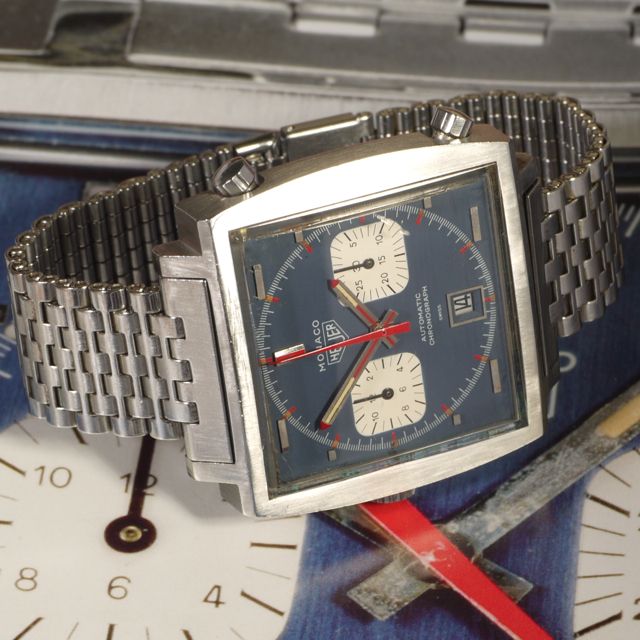
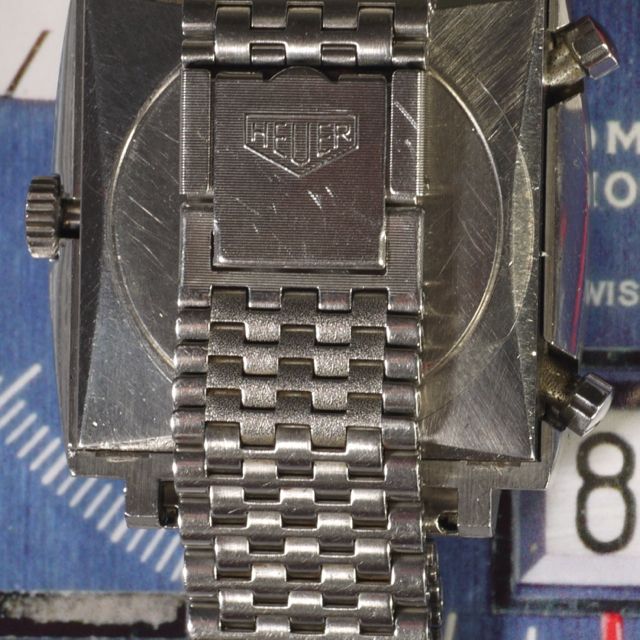
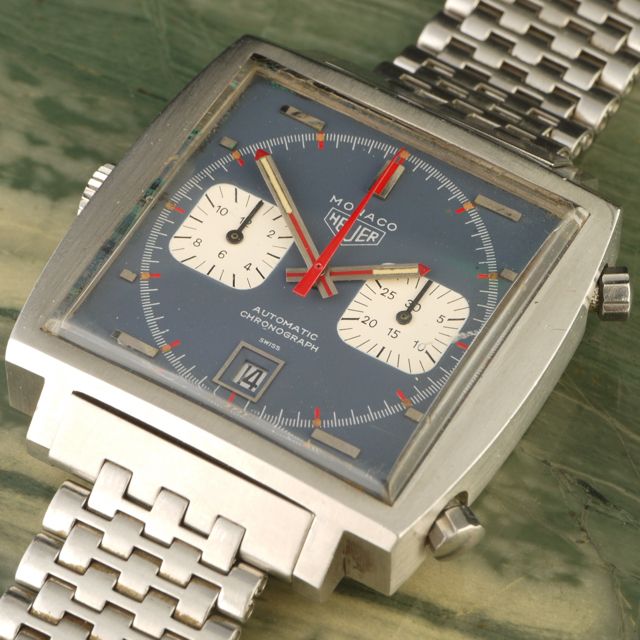
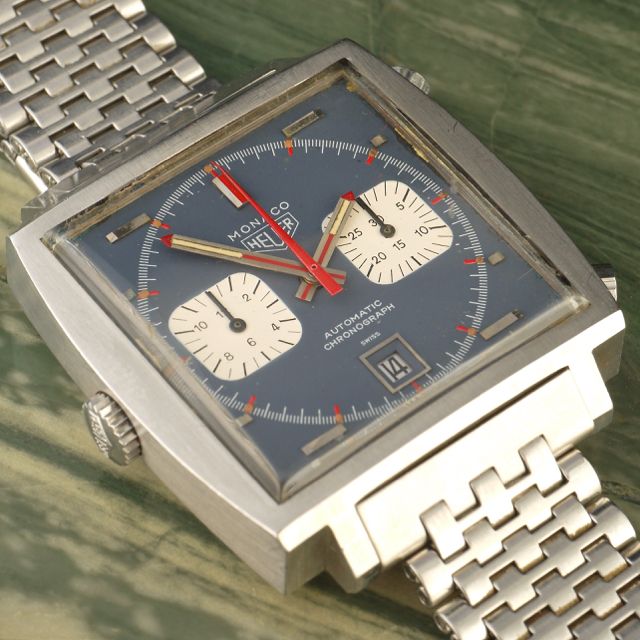
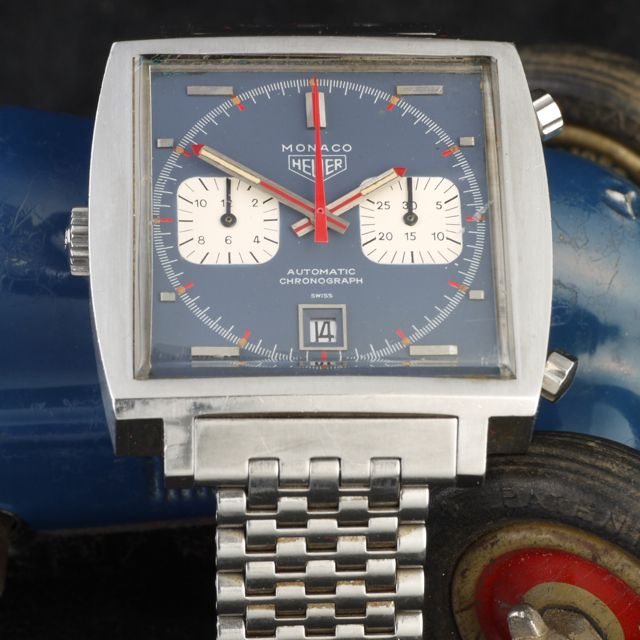
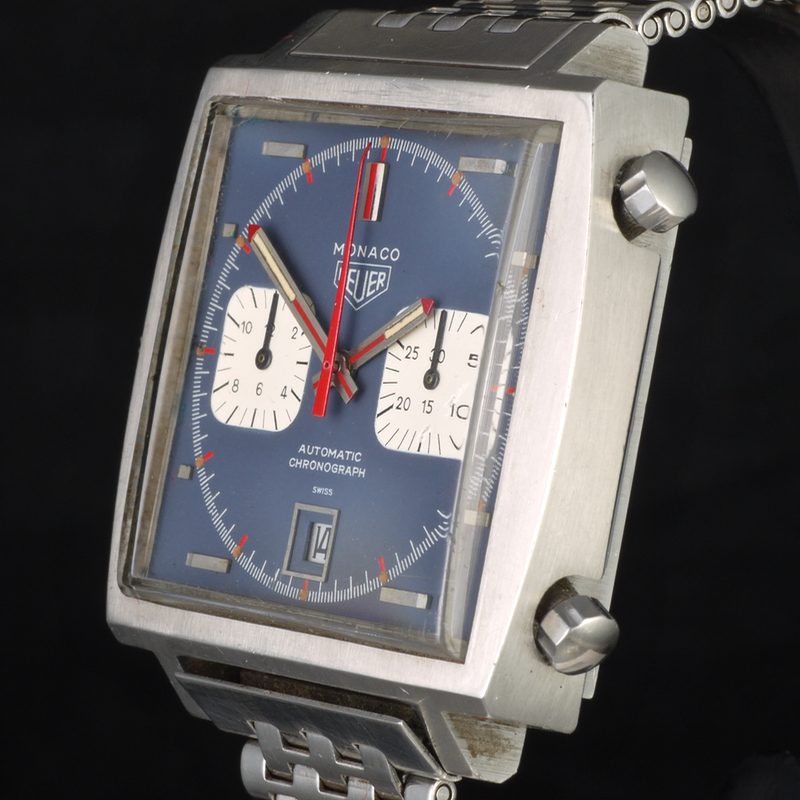
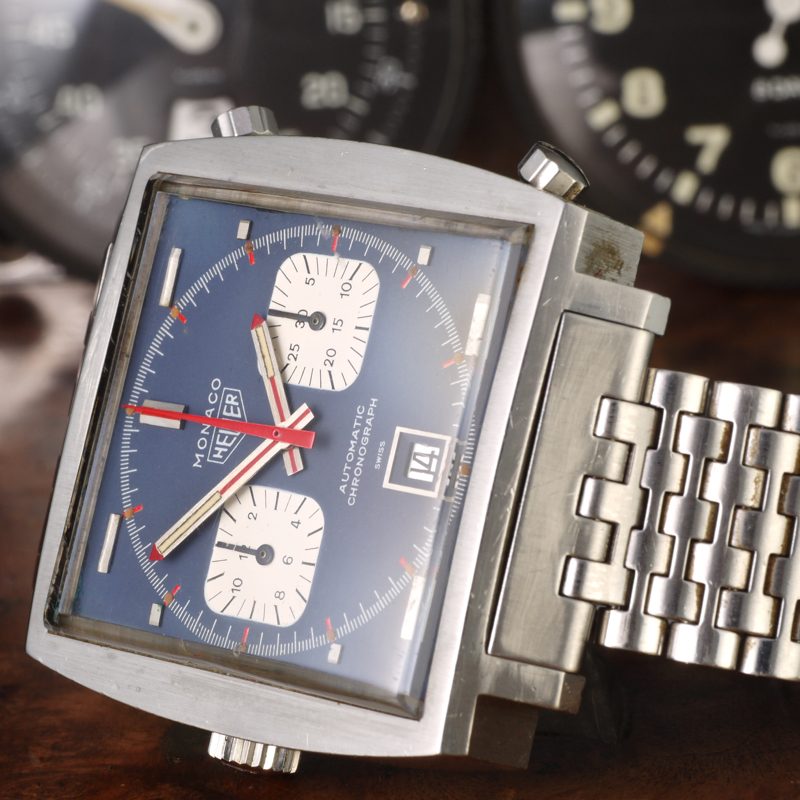
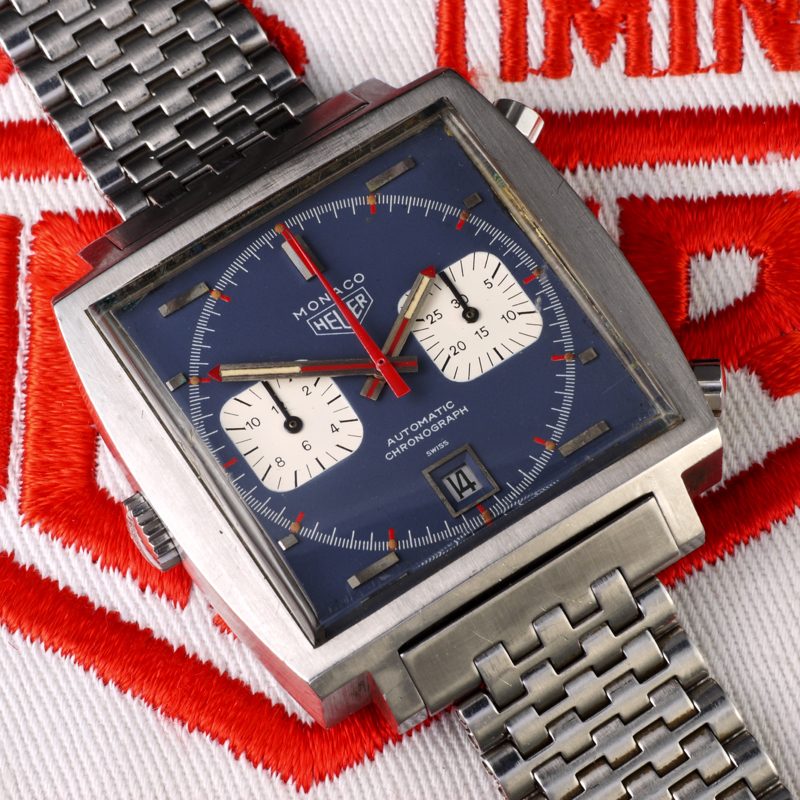
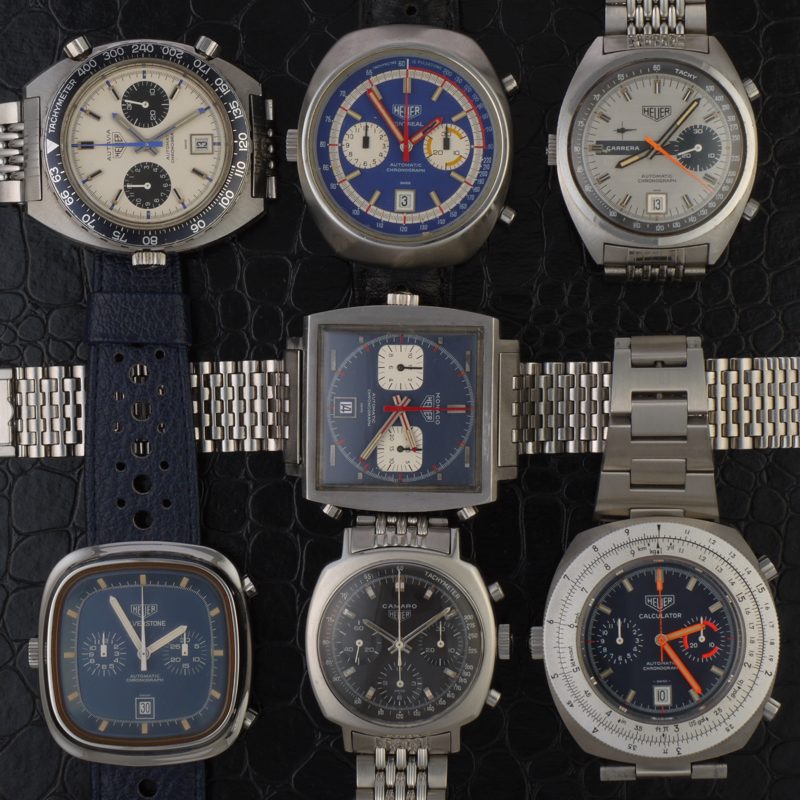
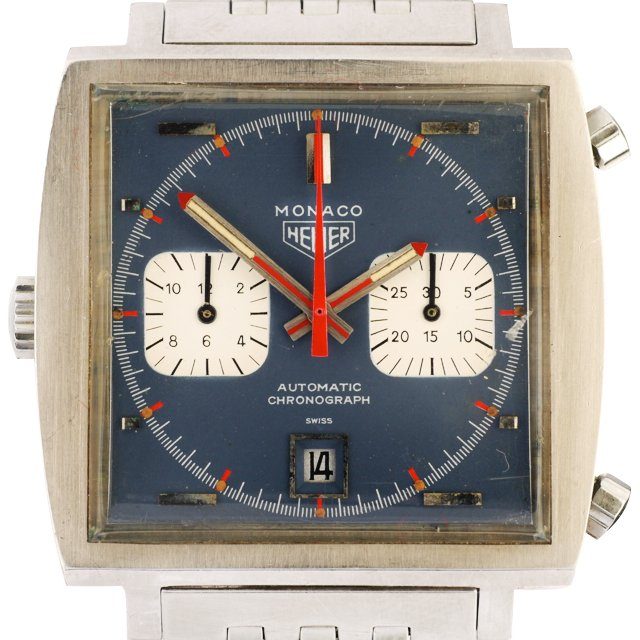
Heuer Monaco Steve McQueen
Neil Armstrong and Buzz Aldrin become the first humans to walk on the Moon1969 Heuer Monaco Steve McQueen ref. 1133 B.
The Heuer Monaco was launched in 1969 as one of the first automatic chronographs in existence and one that Jack Heuer named in honor of the famous Monaco GP Formula One course. With its square case, the Monaco was even seen on Steve McQueen’s wrist in the 1971 film Le Mans. An absolute classic in the chronograph world, vintage Monacos are extremely desirable and claim a considerable fee in the used market.
The Heuer Monaco may very well be the single most recognizable motorsports chronograph in history. With its large proportions and memorable tie to the original King Of Cool, the Monaco is on the wish list of every car nut on the planet.
In 1969 three automatic chronographs were introduced: the Zenith el Primero, the Seiko 6139, and the Caliber 11 (produced in partnership with Heuer, Hamilton/Buren, Dubois-Depraz, and Breitling). To this day, it is disputed as to which of these brands launched first. In fact, the Caliber 11 did go on sale before the el Primero.
The movement is based on the Buren 1282 with micro-rotor and was not designed to attach a chronograph mechanism – this led to the crown at 9 o’clock. While the el Primero has survived until today, the expensive design made this movement a victim of the quartz boom. Consequently, the number of these watches with the crown on the wrong side is pretty low.
It all started in 1860, with Edouard Heuer setting up a workshop in Bernese, a predominantly French-speaking area of Switzerland close to the French border, a small town even now with a population under 5000. However, it is no stranger to watch companies, having also been where Breitling was founded and having been home to Longines. Of course, those companies were artisan workshops producing small numbers of mostly silver-cased pocket watches.
In 1914 Heuer made the first wristwatch for men, they used pocket-watch movements and reflected demand for wristwatches that would only increase during the First World War and after.
1920 was the first time in 8 years that an Olympic Games had been held, following the cancellation of the 1916 Berlin events. Heuer had some prominence as a sports timing company by this point and was pleased to be selected as the official timer of the Antwerp games. This was subsequently extended to the 1924 games in Paris and 1928 in Amsterdam: this cemented the brand marriage between timing and sports.
For today’s collectors, the heyday for Heuer really began in the mid-1930s. I think that’s also probably true for many other brands. Heuer began making pilots chronographs in 35. These were used by Air Force pilots primarily, a lot of them in the German Air Force. For most Heuer collectors, these pilot chronographs from around 1935 are the first real survivors that regularly can be found in the market today.
In the 1960s and 1970s, no brand was more prominent in motorsports timing than Heuer.
